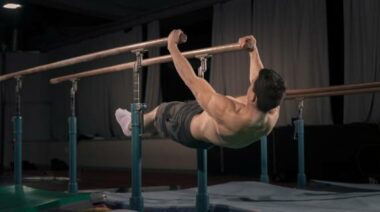Good news for people who like to stay in shape by doing short interval training: Music makes it easier. This, according to researchers at the University of British Columbia’s Okanagan campus, in a study recently published in the Journal of Sport Sciences.1
The researchers, Kathleen Martin Ginis and Matthew Stork, took a look at people doing moderate- and high-intensity interval training (HIIT), with the proviso that they were first-timers. The researchers found that the participants were more positive and just responded better if they listened to music while thewoy worked out.
“There has been a lot of discussion in the exercise and public policy worlds about how we can get people off the couch and meeting their minimum exercise requirements,” says Martin Ginis, professor of health and exercise sciences at UBC. “The use of HIIT may be a viable option to combat inactivity, but there is a concern that people may find HIIT unpleasant, deterring future participation.”
However, if you add music to HIIT sessions, the researchers found the likelihood of churn in participation was reduced, and everyone felt pretty good about working out at intensity. And the HIITs keep on coming.
According to Stork, a PhD candidate at UBC’s Okanagan campus, “For busy people who may be reluctant to try HIIT for the first time, this research tells us that they can actually enjoy it, and they may be more likely to participate in HIIT again if they try it with music.”
“Our research aims to learn more about people’s perceptions towards HIIT and ultimately determine if people can adhere to these types of exercises in the long term,” says Stork. “With the introduction of HIIT exercise, people may not necessarily require the dreaded 150-minute weekly total.”
The Canadian Society for Exercise Physiology says adults aged 18 to 64 should do a minimum of 150 minutes of moderate-to-vigorous exercise per week in total.
Reference:
1. Stork, Matthew J., and Kathleen A. Martin Ginis. “Listening to music during sprint interval exercise: The impact on exercise attitudes and intentions.” Journal of Sports Sciences (2016): 1-7.






